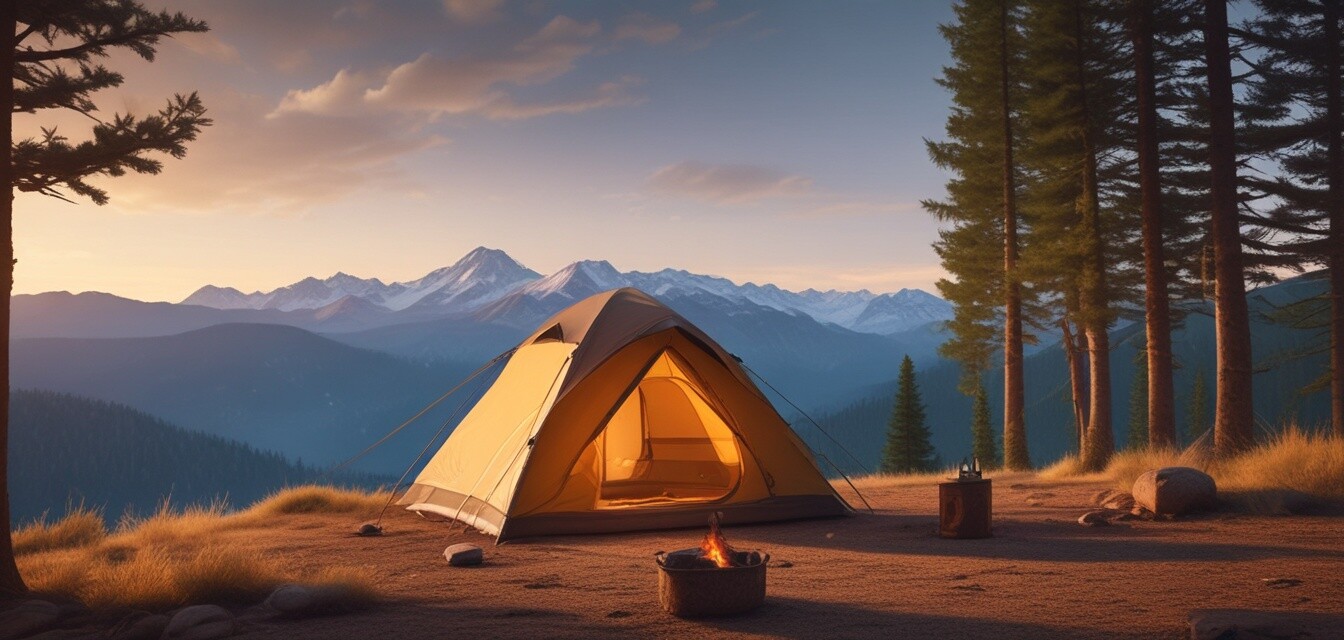
Creating a Safe and Fun Camping Environment
Key Takeaways
- Choose a safe location: Look for flat ground away from hazards.
- Prepare with the right gear: Use quality tents, sleeping gear, and cooking equipment.
- Practice proper food storage: Keep food away from wildlife.
- Set up a communal area: Create a space for relaxation and fun activities.
- Consider water sources and waste disposal: Ensure safe drinking water and a proper waste system.
Camping can be a profound experience, allowing you to connect with nature and rejuvenate your spirit. However, ensuring safety and enjoyment is key, especially for beginners. In this guide, we will outline how to set up a campsite that prioritizes fun while keeping safety in mind.
1. Choosing the right campsite
The first step to a successful camping trip is selecting an ideal campsite. Here are some tips:
- Look for Flat, Dry Ground: Choose a location that is flat and not prone to flooding.
- Avoid Hazards: Stay clear of areas with dead branches or unstable rocks.
- Proximity to Water: Be near a clean water source, but not too close to avoid flooding.
- Check the Regulations: Ensure you camp in designated areas with the relevant permits.
2. Setting up your campsite
After choosing your location, it’s time to set up your campsite. Follow these guidelines:
2.1 Pitching the tent
Follow these steps to pitch your tent properly:
- Clear the area of debris and rocks.
- Lay a ground tarp to protect your tent from moisture.
- Assemble the tent poles and insert them into the tent.
- Stake down the tent securely for stability.
2.2 Creating a communal space
Your campsite should have a common area for eating, relaxing, and socializing. Ensure the following:
- Set up seating using camping chairs or logs.
- Create a safe fire pit area with rocks or a designated fire ring.
- Keep cooking gear in a separate area to avoid cross-contamination.
3. Food and cooking safety
Food safety is essential while camping. Here’s how to store and prepare food safely:
- Use Coolers: Keep perishable items in a cooler with ice.
- Store Food Properly: Keep food in sealed containers to prevent attracting wildlife.
- Practice Safe Cooking: Use a camp stove or fire pit with appropriate cookware.
4. Managing waste
A clean campsite is important for both safety and environmental reasons. Follow these guidelines:
- Pack Out What You Pack In: Bring trash bags to collect all waste.
- Use Designated Toilets: If none are available, dig a "cat hole" at least 200 feet away from water sources.
5. Keeping everyone safe
Safety should be your top priority, especially if camping with family or pets. Here are some general tips:
- Always supervise children and pets.
- Keep a first-aid kit accessible at all times.
- Be aware of wildlife in the area and know how to react.
Pros
- Enhances outdoor experience with comfort and safety.
- Increases preparedness for unexpected situations.
- Encourages bonding and teamwork among campers.
Cons
- May require extra time for setup and planning.
- Investing in gear can be expensive initially.
6. Fun camping activities
Beyond the basics, your campsite can become a hub for enjoyable activities:
6.1 Outdoor games
Set up games such as:
- Frisbee or toss games
- Scavenger hunts
- Card games at the communal area
6.2 Evening campfire
The campfire can be a source of entertainment with:
- Storytelling sessions
- Cooking marshmallows or s'mores
- Stargazing
Conclusion
Creating a safe and enjoyable camping environment is essential for a successful and memorable outdoor experience. By following these guidelines, you can ensure that both comfort and safety come first, making your camping experience enjoyable for everyone involved. For more tips on camping, check out our other guides on Camping Tips and Tricks, Camping Buying Guides, and Camping News and Trends.